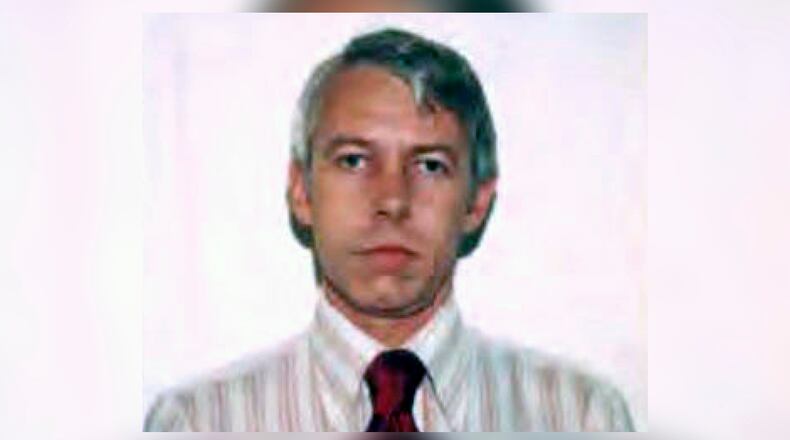The working group was created by a May executive order from Ohio Gov. Mike DeWine. The board is already making changes based off the group’s report.
PREVIOUS COVERAGE
• OSU physician Richard Strauss may have sexually abused ‘thousands,’ attorneys say
• Ohio State doctor abused 177 students, report finds
• DeWine: End statute of limitations on rape in wake of OSU case
One of the recommendations was that the medical board should use victim advocates when investigating sexual impropriety and develop victim advocacy expertise internally as well as work with outside victim advocacy networks.
The board is already working on this recommendation and should have victim coordinators under contract by Oct. 16.
Victim advocates already work with other agencies around Ohio and help victims have a voice and navigate legal or regulatory systems they don’t understand. Tia Lurie shelter and operations manager at YWCA Dayton, which does victim advocacy work, said these advocates helps victims feel believed and supported.
“They often kept things a secret for some time. It’s often hard to grasp that people in positions of power have done these horrible things so people don’t want to believe survivors,” Lurie said. “So having someone who is there to advocate for the survivors, and believe them, and help them navigate the system is hugely important.”
Even when they aren’t directly working with a specific victim, Lurie said advocates can help bring expertise to the table.
Related: Alleged victims in OSU doctor sex abuse case speak to trustees for first time
“They can bring what their experience has taught them about what victims might be feeling but are not comfortable to say and what are some of the repercussions that aren’t medically noted or in the police report,” Lurie said. “So even when its not directly related to working with an individual, they can bring a lot to the table that is outside the scope of a lawyer or law enforcement.”
A total 1,429 instances of fondling and 47 instances of rape have been attributed to date to Strauss, a university-employed physician from 1978 to 1998 who died by suicide in 2005. Investigators say Strauss’ sexual abuse of his patients was effectively unaddressed for nearly the entire length of his 19-year career at Ohio State.
OSU also commissioned an independent investigation into Strauss and taken steps like paying for counseling for his victims and changing some university protocols.
The working group report said “Documented systemic failures at both The Ohio State University and State Medical Board of Ohio prevented any tangible administrative or criminal consequences from ever being taken against Richard Harry Strauss during his lifetime.”
Michael Wright, a Dayton attorney representing 140 Ohio State athletes, said the medical board report is not shocking based on what he’s learned from his clients, who are accusing Ohio State of covering up the abuse.
“Clearly based on this report there needs to be change there as well. But Ohio State was in a position to prevent this and they did not,” he said. “I believe the medical board does have some culpability but ultimately this was Ohio State’s employee … they knew for a long time that there were allegations that he was doing this to players and they did nothing.”
MORE: OSU battles state medical board for records in doctor sex abuse case
No practicing physician came forward to report Strauss, and the medical board staff only happened to learn about Strauss’ abuse in 1996 while investigating another complaint. The board investigator recognized “the potential severity and reach” of Strauss’ conduct and wrote a memo to her supervisor recommending an investigation against Strauss be opened.
The medical board’s investigation sat inactive from early 1997 and was closed in 2002 with no action taken. Strauss moved out of state in 1998 and to California where he held a medical license.
No law enforcement was alerted. The board’s couldn’t find any paperwork explaining the rationale behind taking no action and staff even searched 31 boxes from 2002 to see if any paperwork had been mislabeled. The board investigators found physicians in 1996 who may have failed to report Strauss, the board did not pursue action against those individual physicians.
“For reasons that simply cannot be determined from the files still available or known or recalled by anyone interviewed by this Working Group, the investigation fell into what one former employee called a ‘black hole,’” the report said.
Recommendations
The working group gave the State Medical Board of Ohio a list of recommended changes including:
• Identify any current Ohio medical license holders who should have reported Strauss but didn’t
• Develop a protocol by the end of the year to work law enforcement after the board receives allegations of sexual impropriety that may implicate criminal conduct, while remaining mindful of administrative procedures, constitutional protections against self-incrimination, confidentiality, and survivor-centered and trauma-informed investigations
• Implement a practice of quality assurance to ensure an investigation is opened when it should be, and to review the decision of whether the investigation merits moving from investigation to enforcement against the physician’s license
• Improve transparency and make sure that investigation confidentiality isn’t used to shield oversight of inappropriate inaction such as that in the Strauss investigation
• Find ways to get staff to work collaboratively and fix what the report called “pronounced conflict” between the board’s investigative staff and both its members and its enforcement staff
About the Author
